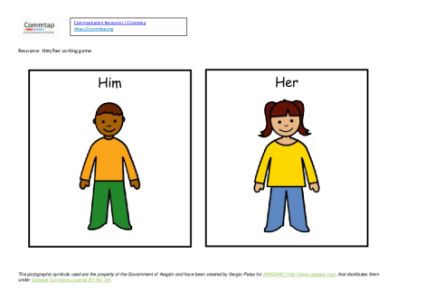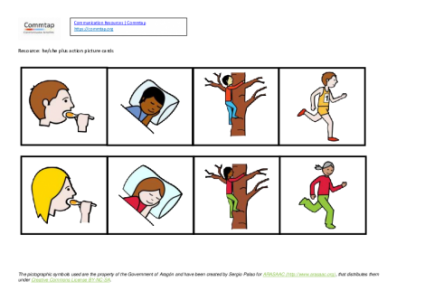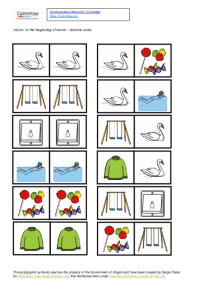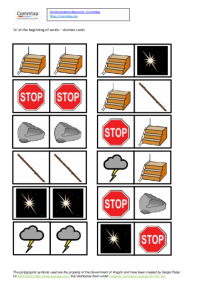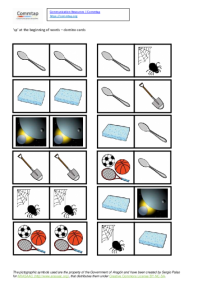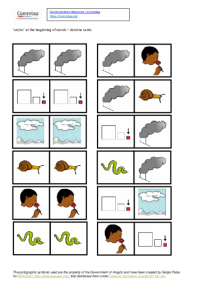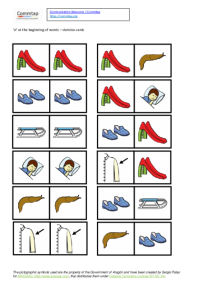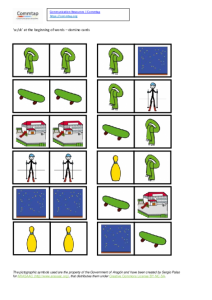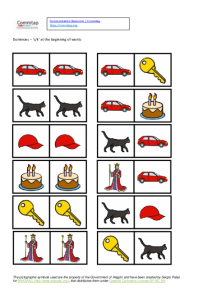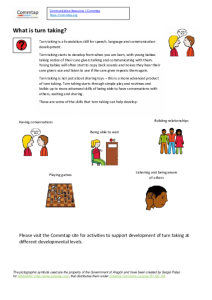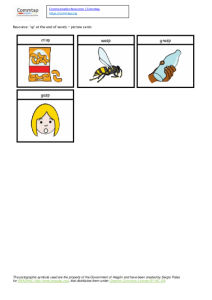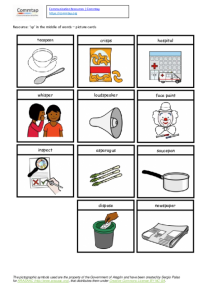Search
User login
Topic “Small group”
Contains activities or strategies suitable for a small group.
Activities to develop understanding and use of the personal pronouns 'he' and 'she'
| Activity/strategy name and materials required | How to do the activity | Key principles for doing the activity and comments |
|---|---|---|
| Male/Female and he/she sorting activity - Male female sorting symbols and pictures - click here to print - You could also use photographs of family members, pictures from magazines/newspapers. |
| Once your child is getting confident with sorting the pictures into the correct piles, you can start to add the labels 'he' and 'she', e.g. 'we call a woman/girl a 'she', 'we call a man/boy a 'he''. This is called modelling - your child is not expected to use the words at this point but it is important for them to start to hear the new words that they are going to learn. |
| Which is it? | 1. Print and cut out the he/she pictures. Choose one each of an action, e.g. don't have both the boy and girl running. 2. Spread the pictures out in front of you. You may like to play a turn taking game alongside using the pictures. 3. Ask the child a question, e.g. "who is cooking?" 4. The child points to the correct picture and says, for example, "he is" or "he is cooking". 5. You can sort the pictures into a pile of he/she. | |
| Play with dolls A male doll A female doll A selection of different objects e.g. cup, ball. | ||
| Matching Pairs | ||
| Using he/she plus an action word | ||
| he/she lotto game |
Activities to develop early turn taking skills
| Activity/strategy name and materials required | How to do the activity | Key principles for doing the activity and comments |
|---|---|---|
| Ball Roll - a ball |
| To extend this activity, you could add extra people to roll the ball to (small group).
|
Support Commtap to keep it online
Thank you for visiting Commtap.
Commtap needs £5,000 per year to cover its basic running costs, we only have £1,000 left. Please make a donation now.
Please read this message as it is extremely important.
- Visitor donations mean we can continue to host over 1,000 free activities to support speech, language, and communication development.
- Visitor donations mean we can continue to provide free resources to address a wide range of communication needs, including limited speech or language, interaction challenges, and needs associated with conditions such as developmental language disorder, autism, and cerebral palsy.
- Visitor donations mean we can continue to provide resources to support the work of speech and language therapists, teachers, teaching assistants, parents, and carers.
It costs £5,000 a year to cover Commtap's basic day-to-day running costs. We have £1,000 left.
Right now, less than 1% of Commtap's visitors pay anything towards the running of the site.
We know that not everyone is able to afford to pay to access these resources, however, if you can, please make a minimum donation of £10 to keep the site going.
Thank you
Google ads on this page are provided by Google Adsense - and their presence does not imply any endorsement by Commtap. Report a problem with an ad on this page. Log in (for free) to avoid seeing Google ads.
